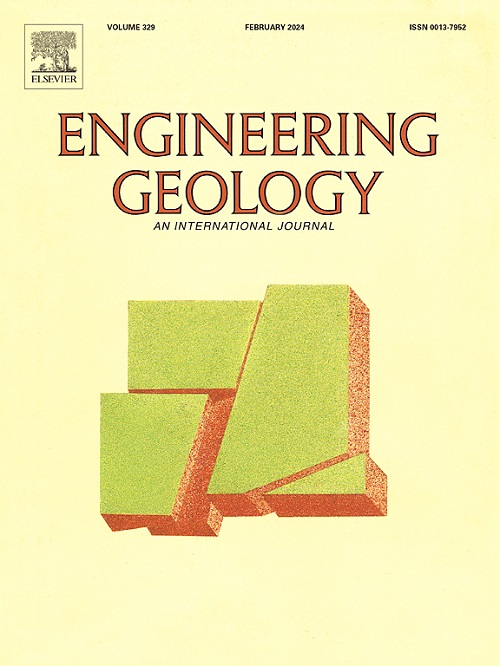A coupled probabilistic site characterization method for estimating soil stratification and spatial variability using multiple-source site investigation data
IF 6.9
1区 工程技术
Q1 ENGINEERING, GEOLOGICAL
引用次数: 0
Abstract
Probabilistic site characterizations, which primarily involve delineating soil stratification and assessing the spatial variability of soil properties, is crucial for geotechnical reliability analysis and risk assessment. Geotechnical site investigation typically produces sparse, multiple-source and multiple-type data. However, most current site characterization methods can only handle a single type of data such as cone penetration test (CPT) data and address the stratification uncertainty and the spatial variability of soil properties separately. To overcome these limitations, this study proposes a coupled probabilistic site characterization method that integrates the Markov random field and Gibbs sampler methods to simultaneously quantify both types of uncertainties. The Markov random field (MRF) is used to estimate the distribution of the soil stratification while the Gibbs sampler is used to construct the probability density function (PDF) of soil properties for each soil stratum. The Bayesian method is employed to account for the interaction between soil stratification and the spatial variability of soil properties. The proposed method is demonstrated through application to a virtual site and a real project site in Hong Kong. Results show that the proposed method effectively leverages limited multi-source site investigation data, considering the interactions between stratigraphic uncertainty and the spatial variability of soil properties. It delivers higher prediction accuracy of soil stratification compared to the Markov random field alone and models the spatial variability of soil properties more effectively.
基于多源站点调查数据估算土壤分层和空间变异性的耦合概率站点表征方法
概率场地表征主要涉及土壤分层和评估土壤性质的空间变异性,对岩土可靠性分析和风险评估至关重要。岩土工程现场调查通常产生稀疏、多来源和多类型的数据。然而,目前大多数场地表征方法只能处理单一类型的数据,如锥贯试验(CPT)数据,并分别处理分层不确定性和土壤性质的空间变异性。为了克服这些限制,本研究提出了一种耦合概率站点表征方法,该方法将马尔可夫随机场和吉布斯采样器方法结合起来,同时量化这两种类型的不确定性。利用马尔可夫随机场(MRF)估计土壤分层分布,利用吉布斯采样器构造各土层土壤性质的概率密度函数(PDF)。采用贝叶斯方法来解释土壤分层与土壤性质空间变异之间的相互作用。通过香港的一个虚拟站点和一个实际项目站点的应用验证了所提出的方法。结果表明,该方法有效地利用了有限的多源调查数据,考虑了地层不确定性和土壤性质空间变异性之间的相互作用。与单纯的马尔可夫随机场相比,它提供了更高的土壤分层预测精度,并且更有效地模拟了土壤性质的空间变异性。
本文章由计算机程序翻译,如有差异,请以英文原文为准。
求助全文
约1分钟内获得全文
求助全文
来源期刊

Engineering Geology
地学-地球科学综合
CiteScore
13.70
自引率
12.20%
发文量
327
审稿时长
5.6 months
期刊介绍:
Engineering Geology, an international interdisciplinary journal, serves as a bridge between earth sciences and engineering, focusing on geological and geotechnical engineering. It welcomes studies with relevance to engineering, environmental concerns, and safety, catering to engineering geologists with backgrounds in geology or civil/mining engineering. Topics include applied geomorphology, structural geology, geophysics, geochemistry, environmental geology, hydrogeology, land use planning, natural hazards, remote sensing, soil and rock mechanics, and applied geotechnical engineering. The journal provides a platform for research at the intersection of geology and engineering disciplines.
 求助内容:
求助内容: 应助结果提醒方式:
应助结果提醒方式:


